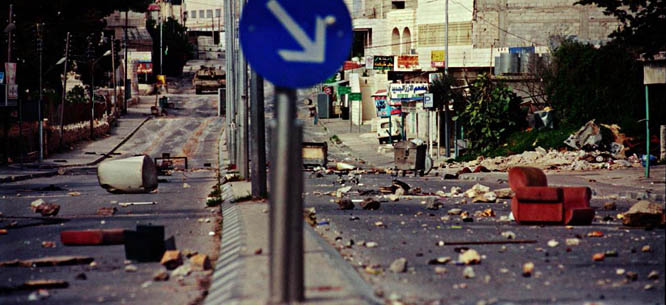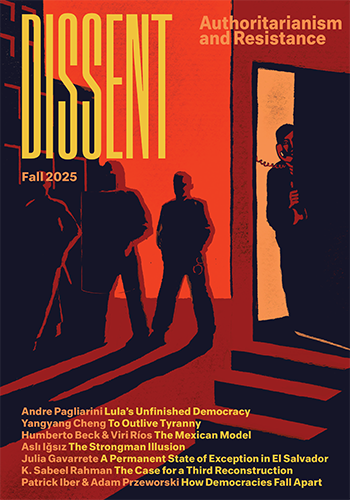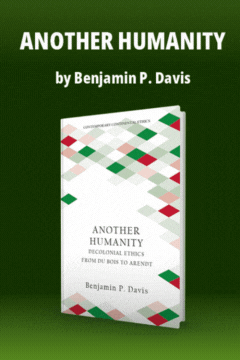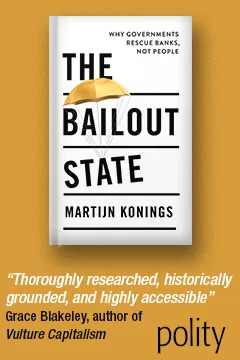Letter from Jerusalem: Optimist? Pessimist? I’m a Peacimist
Letter from Jerusalem: Optimist? Pessimist? I’m a Peacimist

When John Kerry insisted this week that Israelis and Palestinians are closer to a peaceful conciliation than they have been in years (presumably since the collapse of the Oslo peace process in 2000), one could hear the rolling transatlantic snigger. Optimism? He, and his boss, are simply naive and have yet to learn the inexorable futility of any Israeli-Palestinian “peace process.” Peace negotiations? Pleeease. Can somebody pass the salt?
The paradox of Israeli attitudes regarding the peace process is familiar. Polls show that some 55 percent of Israelis (by which pollsters almost invariably mean Jewish Israelis) are in favor of a two-state solution to the Israeli-Palestinian conflict. The same polls also show that 70 percent believe that the peace negotiations do not stand a chance. President Obama’s celebration of John Kerry’s achievement in bringing both sides back to the table for the first time in three years was lost in the din of the hot question in the headlines the week negotiations began: whether a then-candidate for governor of the Bank of Israel was caught shoplifting in the Hong Kong airport many years ago. Israel, the ultimate news-consuming nation, has sharp sensors for what news really matters.
What is perhaps less familiar about this paradox is how deep it runs. There has been a more or less stable majority for a two-state solution for a decade at least. Significantly—I will come back to this in a moment—these numbers did not go down in response to the bloody Second Intifada but have kept rising slowly. In Camp David in the year 2000, the support for a comprehensive agreement was just below 50 percent. Since then it has become and remained a majority position. (Perhaps surprisingly, the numbers are very similar on the Palestinian side—virtually a mirror image of the Israeli trends.) The public opinion majority in favor of a two-state solution is especially staggering when you take a longer view: in the 1980s, before the First Intifada, you could put all Israelis who were willing to utter the words “Palestinian State” into a single room, or at most a single football field.
Given these promising opening conditions, why do so few believe that in a few months we’ll have the skeletal framework of a peace agreement? Netanyahu, they scoff, is not really interested: the ghost of his recently deceased historian father and the henpecking of his domineering wife tell him otherwise. And in any case, he is much too weak to lead his people through the painful concessions inevitable in any comprehensive deal. (They say the same about Abu Mazen.)
It is true that Netanyahu is a weak leader. He famously avoids taking initiative on controversial topics. He does not even lead from behind. Netanyahu typically finds himself dragged into situations against his will and then caves in to pressures, especially the panic of some imminent scenario—often overblown in his mind—that may weaken his hopefully eternal political rule. But this may actually be good news. Weak leaders bow to pressures. We got a reminder of that only last week, when an insistent European Union made Israel’s participation in the scientific collaboration agreement Horizon 2020 (and the billions in potential funding that come with it) conditional on language that precluded cooperation with companies based in Israeli settlements. After much bravura and posturing, Netanyahu’s government resigned itself to these conditions.
A weak leader also is worried about reelection, all the more so after the world left Netanyahu stranded on Iran and thus needy of some weighty achievement to prove that he still matters. The same is true of the two other partners to this negotiation, Abu Mazen and Obama: both have suffered setbacks recently, both are perceived as weak, and both crave a successful break. In this political landscape, the stakes for all parties in a successful outcome to these negotiations may be higher than publicly acknowledged. And as Obama has proven recently with Iran, what transpires in hidden channels of communication may be weightier than those meetings in the public eye that seem to go nowhere until the surprising breakthrough is announced.
And yet Obama’s weakness is also a real liability. He has been dealt the right cards: the Palestinian plan B, to use the United Nations to get the recognition as a state denied by Israel, is a perfect weapon with which to force both sides to a shotgun wedding. If Israel drags its feet, America can threaten not to use its Security Council veto; conversely, if the Palestinians don’t play ball, the United States could use its international power to foreclose their maneuvers. But Obama, frustrating expectations from the audience of his 2009 “New Beginning” speech in Cairo to the Oslo Nobel Peace Prize committee, has been so afraid or unmotivated to play his cards that he ends up bluffing that his hand is much weaker than it actually is. Obama’s political gain from a successful peace agreement notwithstanding, it is simply not clear that he has the wherewithal to push it through.
If so, then, why do I still think a peace agreement is in the cards at all? Because I believe that deeper forces are driving the region in this direction. This is not, however, an optimistic belief.
Besides international pressure, there is one other type of pressure to which Israel is likely to cave: violence in the occupied territories. A third Intifada. In fact, there are many signs now that after two of the most tranquil years since 1967, the ground is moving and about to erupt. Dozens of small scale events—reminiscent of the popular resistance and stone-throwing of First Intifada, not the armed organization and suicide bombers of the Second—have taken place over the past few weeks. (A quick list from the past few days includes several cases of stoning of passersby in Jerusalem, including a baby that was seriously hurt and a well-known lefty activist whose skull was cracked; stone throwing and riot police on the Temple Mount on Friday; a stone-throwing Palestinian boy killed by a military bullet in a refugee camp near Ramallah.) So far, Israel’s main reaction to this bubbling of low-key resistance is denial: most of these incidents go unreported, with the apparent hope that if a tree falls in the Palestinian forest and nobody admits to hearing it, then perhaps it makes no sound at all. And yet it does, and the reverberations might soon begin to rumble like thunder.
Indeed, one wonders whether the path to peace might have to pass through another outburst of violence and bloodshed. I draw this sobering conclusion from the data of Khalil Shikaki, the foremost Palestinian pollster and perhaps the world expert on polling under occupation. Soft-spoken and rigorous, Shikaki does not insist on championing an opinion but instead presents his data for you to interpret, data that he has collected by polling Palestinians every month since the mid-1990s and juxtaposing it with similar data collected in Israel. One of his most eye-opening findings is how much higher support for compromise is on both sides compared to 2000, before the traumatic Second Intifada, when the Camp David negotiations were still going on. The sad conclusion, of course, is that it is not the hope of peace that is pushing people to compromise. Rather, what inches them toward peace is the pain and suffering of conflict and violence, the battle fatigue combined with the realization by trial-and-error of the limits of force.
The bad news then is that bloodshed then seems inevitable for progress to be made. The good news, for the Peacimist, is that the trend towards compromise through waves of violence appears quite stable. (Surprisingly, Shikaki’s polls show that on the Palestinian side this trend holds also through waves of Islamization, remaining unaffected by increasing religiosity.) It seems that most polls do not really ask the most meaningful question: how much pain is the public willing, or rather needing, to suffer in order to reach the agreement that a majority already favors? And are we already there? The fact that the wall/fence/obstacle cutting off most of the occupied territories has generated a two-year stretch of unprecedented tranquility, and thus rendered the price of occupation largely invisible to Israelis, could thus in fact be detrimental to the prospects of peace. If the peace process is really in lockstep with the blood calculus, its current iteration might fail, which in turn is likely to have its own bloody consequences on the ground, signs of which are evident already. And then, maybe, after more repression and much suffering, next time peace will stand a better chance.
None of this is as yet written in blood. Some are warning already of such a dire scenario, though their voices are not yet heeded. Let’s hope Netanyahu and Abu Mazen are weak enough, and Obama not too weak, to succeed now, not next time.
Dror Wahrman is a professor of history at the Hebrew University in Jerusalem and at Indiana University-Bloomington. He writes about European history as well as the history of Jerusalem and current affairs in the Middle East. Read his other “Letters from Jerusalem” here.






